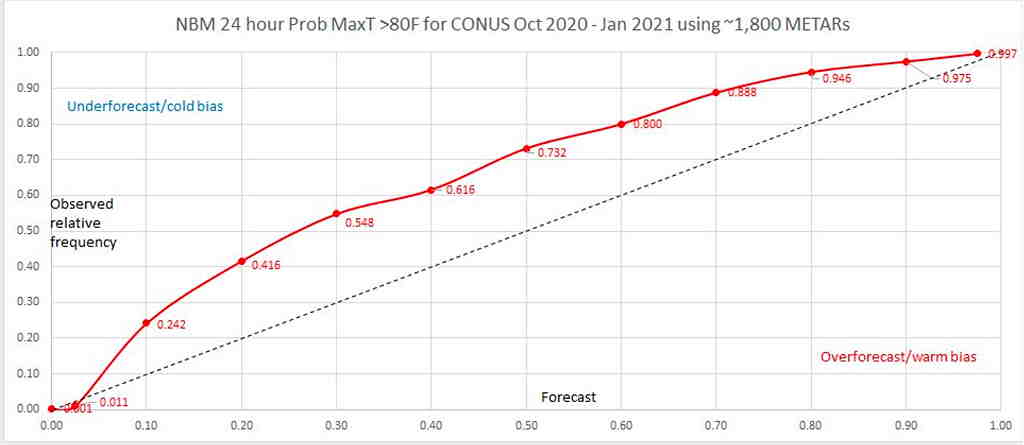The National Weather Service/NOAA creates a weather prediction model that is a statistical composite of many different models— it’s called the “NBM” or “National Blend of Models”. The NBM is created and updated hourly by NOAA and is the product of about 8-9 years of development. It’s current version, 4.0, became operational this past December 2020.
The NBM is a sophisticated and advanced attempt to combine the best forecasts of numerous weather models including multiple U.S. short/long range/ensemble models, several Canadian models/ensemble models and the European model/ensemble models. It also combines various “model output statistics” (“MOS”) and hourly “LAMP” forecasts.
It attempts to achieve its aim by re-examining the forecasts of the models hourly and comparing those forecasts to actual measurements adjusted to actual measured conditions six hours earlier. From the comparisons to actual conditions, it statistically weights the forecast going forward to the best performing model(s) six hours earlier.
The NBM ingests different model runs and forecast statistics at scheduled times during the day and creates a variety of forecast products, including maximum/minimum forecast temperatures and precipitation forecasts.
The NBM is the model I’ve been using for my high temperature forecasts.
I’ve noticed something for awhile, recently confirmed today by an official notice. The NBM high temperature forecasts (“TMAX”) are too low, and the error is higher with higher expected TMAX temperatures.
(I’ve been including the “sd”(standard deviation) in my forecasts for months. I’ve noticed that the actual TMAX is often a degree or so higher than the NBM predicted value PLUS its standard deviation.)
Today, the NBM predicted TMAX for Blue Bell was 49º with an sd of 4.4º The actual TMAX was 53º.
So the actual TMAX was = TMAX + sd!
The NOAA statistical modeling group today released a report today. This graphic captures the problem of the cold bias in the NBM max temp forecasts.

With this disclosure, I’ll be getting rid of my inclusion of the standard deviation in my forecasts (as had been my practice these past six months) and instead will simply be adding the sd to the forecast high temp going forward…and hoping for the best.
With the recent disclosure that the precipitation statistics are also biased too low, we can hope for an early release of NBM version 4.1 or NBM v.5. (Actually, the precipitation problem is being addressed with an update in March.)
